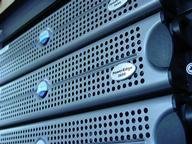Quiz Answer Key and Fun Facts
1. "I got a brand new Octacore rig, all the bells and whistles", Joan gloats. Okay, "octa-" means eight, but her computer thus has eight of what?
2. "I overclocked my machine to 5.6 gigahertz turbo", Stephen brags. Most of the other users just shrug - high clock speeds are nowhere as important as they once were. Why is this?
3. "So, Marian, if you don't believe in clock speed, what DO you look for in a processor?", Stephen quips. Marian's answer sounds a bit strange to the uninitiated, but she has looked for which of these parameters to select a maximum performance processor from the latest generation?
4. "Hey Marian, since you know it all - my 2x8 Gigabyte DDR4-2666 19-19-19 memory is just too slow for me - what would you recommend I buy instead?", Francis asks. Which of these would help his speed (not capacity!) problem, assuming he can't use memory of a different generation?
5. "Say, does anyone know how to read these graphics card benchmarks? This site here has a lot of data on those cards, but the numbers are weird. My new card looks top in almost all values, but its Redshift number is awfully low while several otherwise weak cards have high numbers here", Joan asks. Could you answer her?
6. "You're the disk expert, Joan - I am seeing all of those abbreviations with LC at the end here while reading about solid state disks (SSD). I've got a decent budget and don't need much space, but I want a really fast write speed and best possible reliability for my database. Which type would be best for me?", Francis asks. Help Joan - what should she answer?
7. "What's with these new processors?" Stephen asks. "They now suddenly have P and E cores. I understand that's for Performance and Efficiency, but will it really always be better for me to have some of those less powerful units along with the big ones, assuming everything else is equal?" Can you help Stephen and describe when is 8P+4E better than just 8P?
8. Francis' phone beeps and he reads off a text message from a friend: "I just installed this 4.2 TB Solid State Disk and Windows shows me it has only 3.8 TB. Can you all-knowing folks help me?" Well, what should he answer?
9. Marian also got a call. She gives a few answers in French and laughs. Asked why, she said "Oh, that was my old flame from Marseille. He built a workstation for artificial intelligence face recognition and wondered why it was no faster than his laptop. Turns out he didn't include a graphics card. What a rookie mistake!"
Why would he want a high-end graphics card for that machine?
10. Our four friends are done for the evening when Francis' 10-year-old brother Gary walks in, telling of a problem he has. He used some of Francis' discarded last-year components to turn his own meager system into a beast, but it crashes whenever he starts a modern game or tries to edit a video. What does he most likely need to upgrade?
Source: Author
WesleyCrusher
This quiz was reviewed by FunTrivia editor
rossian before going online.
Any errors found in FunTrivia content are routinely corrected through our feedback system.
